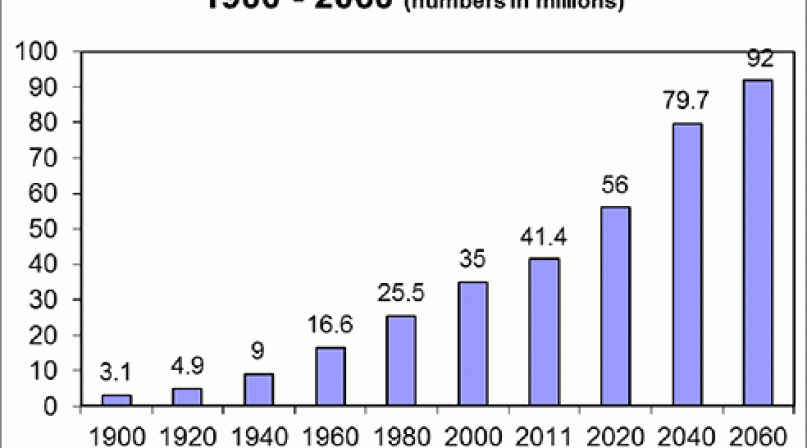NACo urges reauthorization of Older Americans Act

For every action, states Newton's third law of motion, there is an equal and opposite reaction, and so it should follow that for every baby boom, there will come an ag ing boom. Roughly a half century after the most famous of American baby booms one that began after World War II and continued into the mid-1960s a great aging boom is upon us. According to the Census Bureau's projections, the number of Americans who are 65 or older will have doubled between 2000 and 2030. Further, between 2030 and 2040, Census projections predict a 60 percent surge in the number of Americans who are 85 or older, thanks to advancements in medicine, nutrition and public health which have led to increased life expectancy.
These changes in the American populace will have a broad impact on counties, which provide many pro grams and services relied upon by the country's growing aging population. Housing, transportation, recreation and health care are all areas where counties will face challenges as the population ages.
The Older Americans Act (OAA), first passed in 1965 and last reautho rized in 2006, provides much needed funding to help meet these challenges.
According to the National As sociation of Area Agencies on Aging (n4a), a NACo partner and longtime leader on aging issues, OAA has for 50 years "provided an ideal, well-established, trusted and community-based service infrastruc ture responsive to the needs of older people and their caregivers."
States receive OAA funding according to a formula based on each state's share of the nation's population of individuals 60 and older, and are required to pass these funds to area agencies on aging (AAA), which coordinate programs and services for senior citizens at the local level. Nearly 30 percent of the 635 AAAs across the nation are county-based.
An OAA reauthorization bill (S. 192) was approved with unanimous, bipartisan support by the Senate's Health, Education, Labor and Pensions Committee in January. The bill, which has been endorsed by n4a and the National Council on Aging, would reauthorize OAA through FY20, and makes some changes to the formula through which state funding levels are set. It is unclear at this juncture when the bill will be considered on the Senate floor, and there is currently no OAA reauthorization legislation in the House of Representatives.
In the FY16 appropriations process, county leaders should urge their senators and representatives to restore full, pre-sequester-level funding for OAA.
Attachments
Related News

County Countdown – June 30, 2025
Every other week, NACo's County Countdown reviews top federal policy advocacy items with an eye towards counties and the intergovernmental partnership. This week features the Senate reconciliation debate, transparency on sanctuary designations and more.

Supreme Court’s Trump v. Casa, Inc. ruling limits use of nationwide injunctions: what this means for counties
On June 27, the U.S. Supreme Court issued a 6-3 decision in Trump v. Casa, Inc. limiting federal district court judges' ability to issue universal injunctions to prevent federal policies from going into effect nationwide.

County Leaders Visit Washington to Share Local Perspective on Budget Reconciliation
Elected officials from five states sound alarm about administrative and funding changes to SNAP and Medicaid.
